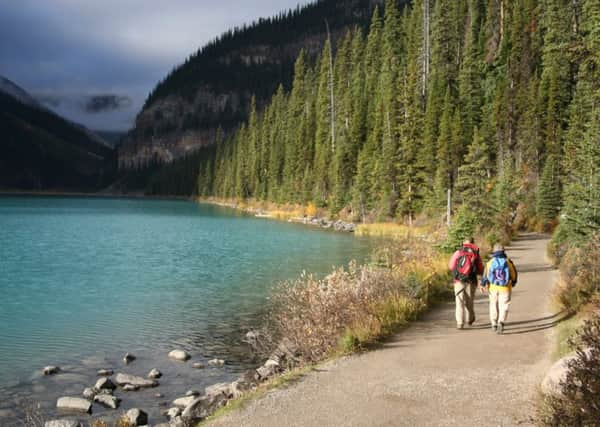Canadians seek Scots’ right to roam


Barry Janyk, executive director of the British Columbia Federation of Mountain Clubs, said he plans to lobby the provincial government for right to public access in the province, where he says ramblers are hampered by “gates and closures”.
In a document set to be presented to the local government, the club states that in Scotland, “access to nature is a constitutionally protected right”.
Advertisement
Hide AdAdvertisement
Hide AdHowever, Janyk added that the level of freedom seen here – which gives everyone rights of access over land and inland water throughout the country – would be too extreme for Canadians.
The British Columbia Federation of Mountain Clubs last week set up a committee to tackle the issue and has drawn up draft legislation for the right to roam.
“Scotland is one of the places that we’re looking to as a template that we might be able to draw on to provide to the authorities,” Janyk said. “The right of the public to access public land for non-motorised vehicles and back country skiing or hiking we think is a fundamental right.
“However, we have a different situation here, as we have the rights of the First Nations to consider and respect.”
He added: “We’re not asking for what you might see in Scotland, where you can hike through someone’s backyard with clothes on the line.”
However, Mark Wrightham, recreation and access manager at Scottish Natural Heritage, said Janyk’s interpretation of Scottish law was not entirely accurate.
The Land Reform (Scotland) Act 2003 allows everyone access to land and water – with certain exclusions set out in the Act – and as long as they behave responsibly. However, exceptions include houses and other residences, as well as “sufficient space around them to give residents reasonable privacy and lack of disturbance”.
He said: “Scotland has some of the best outdoor access legislation in the world, so we’re not surprised that our Canadian friends want to emulate it. But we do want to point out that Scotland’s access rights don’t allow anyone to wander near private houses and in gardens – or under clothes lines!
Advertisement
Hide AdAdvertisement
Hide Ad“People are expected to use their access rights responsibly, respecting others’ privacy and peace of mind, not disturbing wildlife, keeping dogs under control, and taking litter away with them.”
Alison Riddell, national secretary of access body ScotWays, said that the amount of land around a property which should be kept private had been challenged in the courts.
She said: “You can’t be wandering under people’s clothes lines – unless they have a very long clothes line.”
A document prepared by the Canadian group pointed out that almost 95 per cent of the province of British Columbia is designated “Crown land” – belonging to the Canadian Crown – and said it wanted the legal right to access Crown lands by crossing private lands such as forestry areas, owned by private enterprises.
It stated: “The rights of First Nations and private property owners must also be acknowledged and respected. However, what is occurring today is a gradual erosion of access and this must be addressed, whether through Right to Roam legislation, appropriate provisions in tenures or policy.”
Other exceptions to public access rights in Scotland include visitor attractions, which charge for entry, and custom-built sports pitches.
The legislation is likely to be considered by British Columbian government late next year.